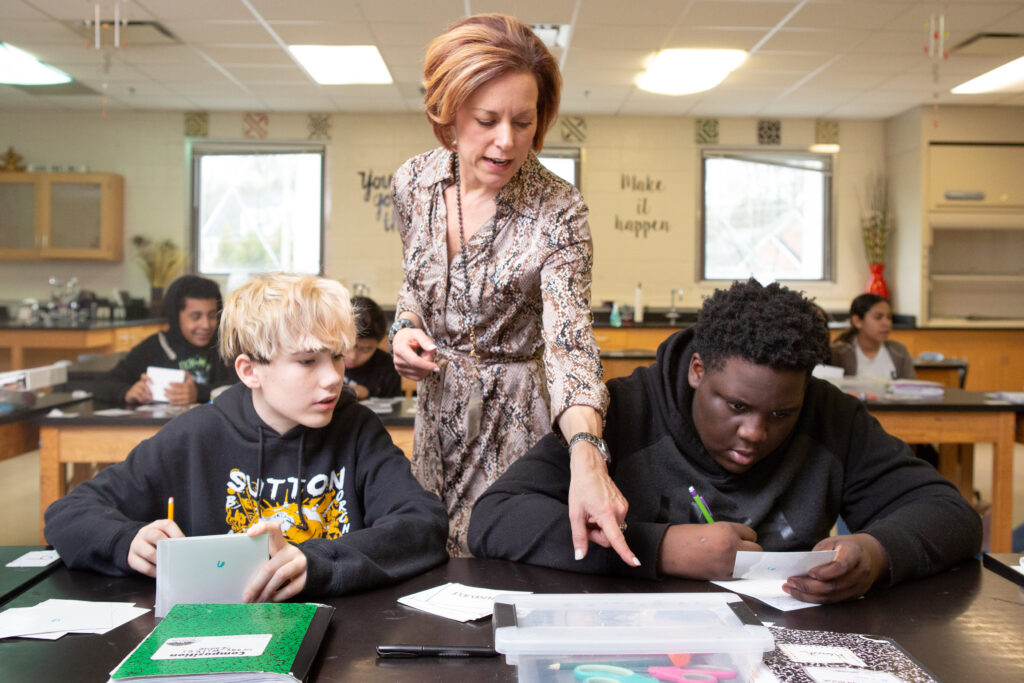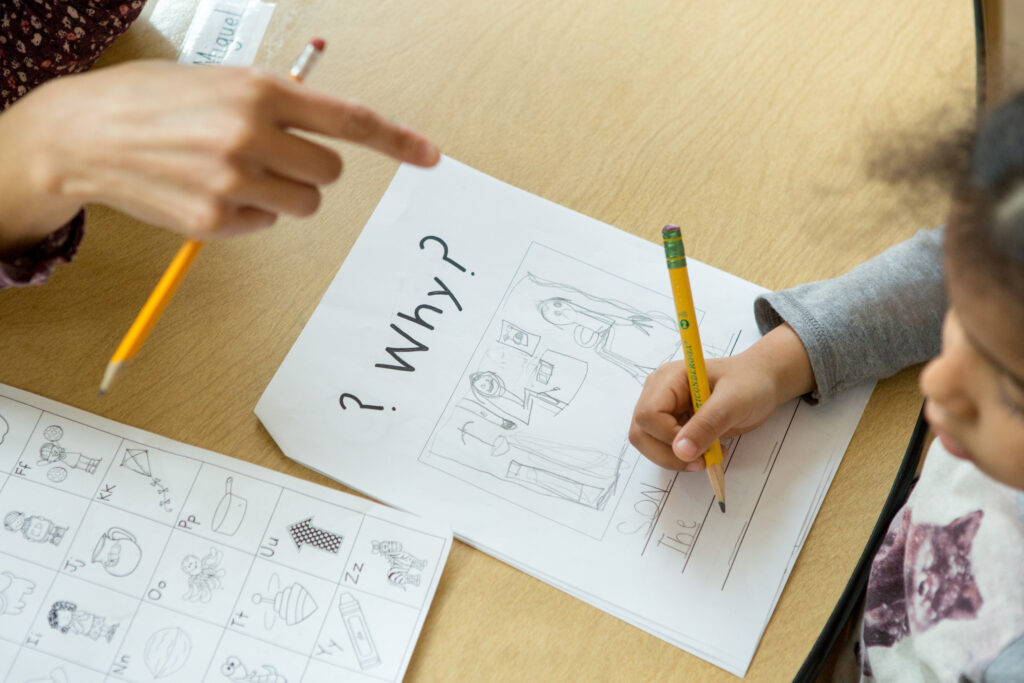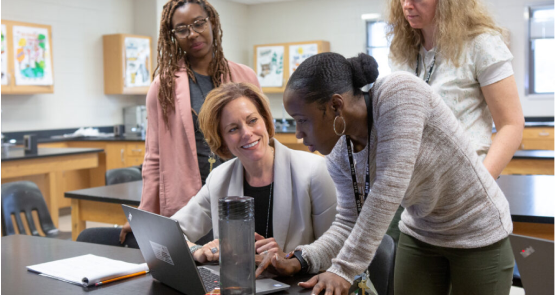1. Teaching Critical Thinking: How to Inspire Better Reasoning
Teaching critical thinking, as most teachers know, is a challenge. Classroom time is always at a premium and teaching thinking and reasoning can fall by the wayside, especially when testing goals and state requirements take precedence. But for a growing number of educators, critical thinking has become a priority.
Teaching critical thinking, as most teachers know, is a challenge. Classroom time is always at a premium and teaching thinking and reasoning can fall by the wayside, especially when testing goals and state requirements take precedence. But for a growing number of educators, critical thinking has become a priority.
This is because, for many reasons, young people simply need critical thinking instruction:
- They are faced with myriad crises — many real and some imagined or exaggerated by unreliable news sources and overstimulated social media users.
- They spend more and more of their time in internet-connected environments where advertisers and interest groups hold previously unimaginable powers of manipulation over them.
- Technology, politics, and society in general all seem to be changing faster than ever before, and the future seems more uncertain than ever.
These changes don’t only complicate the world itself; they affect our powers of understanding at the same time. There’s evidence suggesting social media use can damage attention spans, have an outsized impact on emotions and mental health, and even affect memory. Psychologically addictive reward systems are built into many of these platforms.

Even generally reliable news sources, which increasingly orient themselves to their own fragmented segment of the journalism market, can overwhelm our powers of judgment with sensationalistic headlines, misleading framing, and the sheer volume of information at our fingertips.
The kind of thinking and attention required to engage with complicated issues becomes harder to foster and harder to maintain than it might be in a less saturated information ecosystem. Under these conditions, critical thinking, which has long been a buzzword in education, takes on a new and more urgent significance. New opportunities and methods for teaching critical thinking are needed.


Being able to think critically — with rigor, depth, patience, emotional intelligence, and humility — can have wide-ranging impacts on every aspect of students’ lives: their contributions to civic life, their professional success, their ability to build and maintain healthy relationships, their mental health, and even their physical well-being.
What are the key strategies for teaching critical thinking skills? In many ways, we are still at square one when it comes to teaching our students how to think critically. There are a number of obstacles here:
- Teachers are not given the time, freedom, materials, or professional development tools to teach their students how to think critically.
- Mainstream education priorities — too focused on test results and narrowly defined skills — don’t leave room for critical thinking.
- The best education research, which strongly suggests that critical thinking instruction must be embedded in specific domain instruction, is not well-known or widely put into practice.
- Traditional curricula have not evolved quickly enough to adapt to the new challenges students face in analyzing information and media.
What Is Critical Thinking?
For all the talk about critical thinking, there remains a lot of confusion about what exactly it is. So what does critical thinking mean? This is key to teaching critical thinking, of course.
The Reboot Foundation defines critical thinking quite simply as high-level skills in reasoning, coming to judgments, and making decisions. Even more simply: critical thinking is thinking well.

To get a little more specific, critical thinkers are regularly reflective, objective, and analytical in their thinking:
- They step back to reflect on their own thinking, taking time to plan, strategize, and reform their thinking when necessary.
- They do their best to overcome subjective biases. While they know that pure objectivity is an ideal we can never reach, they draw on the perspectives of others, especially those with opposing views, in order to expand their own horizons.
- They use the analytical tools of logic and effective argumentation to evaluate evidence, make judgments, and discuss issues with others.
For more about Reboot’s definition of critical thinking please see this post: “What Is Critical Thinking?”
How to Teach Critical Thinking
The Importance of Domain Knowledge in Teaching Critical Thinking
Despite a great deal of rhetoric about critical thinking, not enough time is actually spent teaching critical thinking. One major reason is a misconception about its nature. Critical thinking is not a single skill that can be taught, like playing the cello, or content that can be memorized, like the history of the French Revolution. What critical thinking entails often depends on the content and discipline.
What critical thinking entails often depends on the content and discipline.

Although there is overlap, good thinking habits and strategies in physics don’t look the same as those in literary interpretation. We must keep this in mind when we seek to teach thinking. As cognitive scientist Daniel Willingham puts it, “Thought processes are intertwined with what is being thought about.”
What does that mean for teaching critical thinking? There is good and bad news. The bad news is that critical thinking, as a generic skill, is challenging to teach. Critical thinking skills learned in one area aren’t guaranteed to transfer to other areas. The good news is that specific critical thinking instruction can, in many cases, be integrated into existing classroom practices. The key is to understand what constitutes deeper thinking in particular domains and implement classroom practices that leads students toward that kind of thinking. That’s what we’ve set out to do in this guide.

How to teach Critical Thinking Habits
That said, there are some habits and virtues that cut across domains when it comes to how to teach critical thinking. Teachers can make an impact by modeling these intellectual virtues, when possible, for their students.
How to Teach Critical Thinking: Sparking Curiosity.
Young students are eager to know about the world and ask questions tirelessly. Why is the grass green? Why do zebras have stripes? Even adolescents are prone to constant questioning — though their questions sometimes have a more cynical slant.
In the classroom, it’s not always possible to indulge every last question, and some of these questions can be disruptive. But it is still absolutely vital that educators make time to indulge and encourage the curiosity of students. Curiosity, if it’s developed and refined, is crucial to being an informed and engaged citizen of the world.
Open-ended discussions are an excellent way to spark curiosity. We model this kind of discussion in our article on critical thinking and reading. There you’ll find tips on how to prompt students to ask deeper moral and philosophical texts about literary texts. With practice in refining their curiosity, students will begin to develop what’s called “metacognition,” or thinking about thinking. This is a foundational part of critical thinking, in which students turn their curiosity on themselves, and begin to ask why they think and believe what they do.
How to Teach Critical Thinking: Managing Emotions.
Emotions may seem far afield from the ability to reason but critical thinking is emotionally difficult. Critical thinkers have to exhibit the humility to admit that they don’t know everything and they may be wrong. At the same time, they have to be confident enough to ask tough questions and challenge authority when appropriate. And, perhaps most crucially, they have to be able to consider and analyze arguments on their merits, instead of judging the person making them.
When emotions run high in the classroom, for example in a discussion of a controversial topic, it’s a great time for teachers to model these virtues. We offer tips on how to do so in our article on civics education. The goal is to give students civic competence and confidence, ultimately, contribute positively to their communities and society as a whole.
How to Teach Critical Thinking: Checking for Bias.
Emotional arguments can make it especially difficult to recognize and overcome biases. When we’re emotional, we usually fail to step back and look for misinterpretations, hasty conclusions, and assumptions we may have made about the people we’re arguing against.
Instruction in logic and philosophy can help students recognize biased thinking in themselves and, especially, in some of the weak reasoning they all inevitably come across online. Too often, especially in the United States, we’ve considered these topics too advanced for K-12 learners.
Check out our articles on media literacy and philosophy for more on how to help students navigate emotional appeals and understand biases, and for more tips on how to teach critical thinking.




